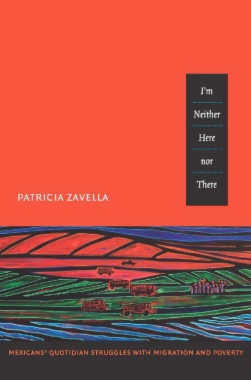I’m Neither Here nor There explores how immigration influences the construction of family, identity, and community among Mexican Americans and migrants from Mexico. Based on long-term ethnographic research, Patricia Zavella describes how poor and working-class Mexican Americans and migrants to California’s central coast struggle for agency amid the region’s deteriorating economic conditions and the rise of racial nativism in the United States. Zavella also examines tensions within the Mexican diaspora based on differences in legal status, generation, gender, sexuality, and language. She proposes “peripheral vision” to describe the sense of displacement and instability felt by Mexican Americans and Mexicans who migrate to the United States as well as by their family members in Mexico.
Drawing on close interactions with Mexicans on both sides of the border, Zavella examines migrant journeys to and within the United States, gendered racialization, and exploitation at workplaces, and the challenges that migrants face in forming and maintaining families. As she demonstrates, the desires of migrants to express their identities publicly and to establish a sense of cultural memory are realized partly through Latin American and Chicano protest music, and Mexican and indigenous folks songs played by musicians and cultural activists.

